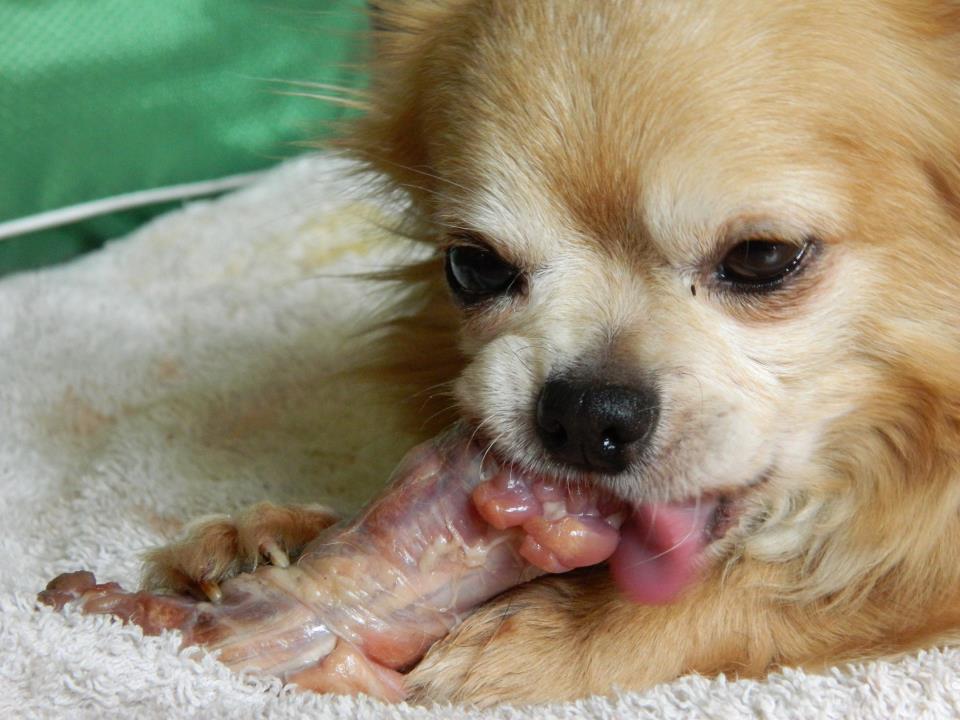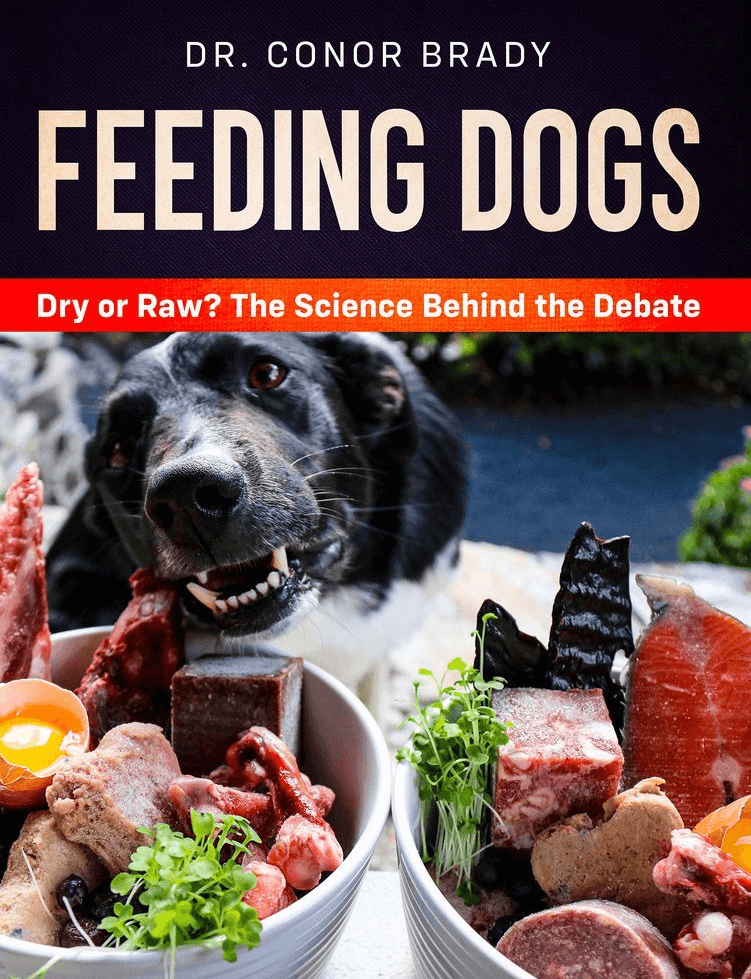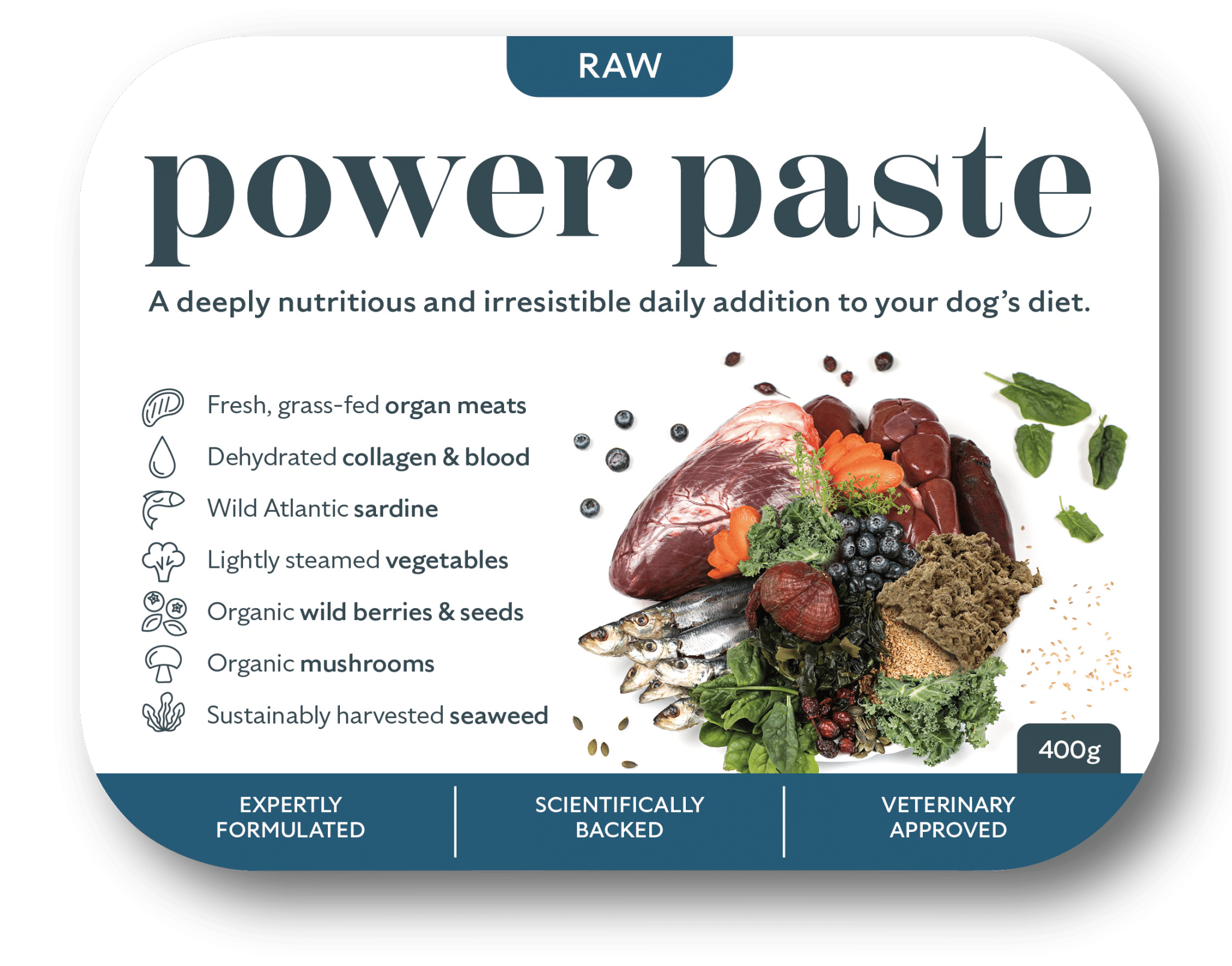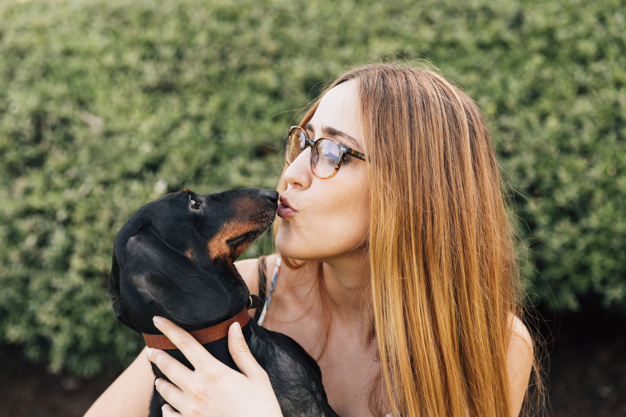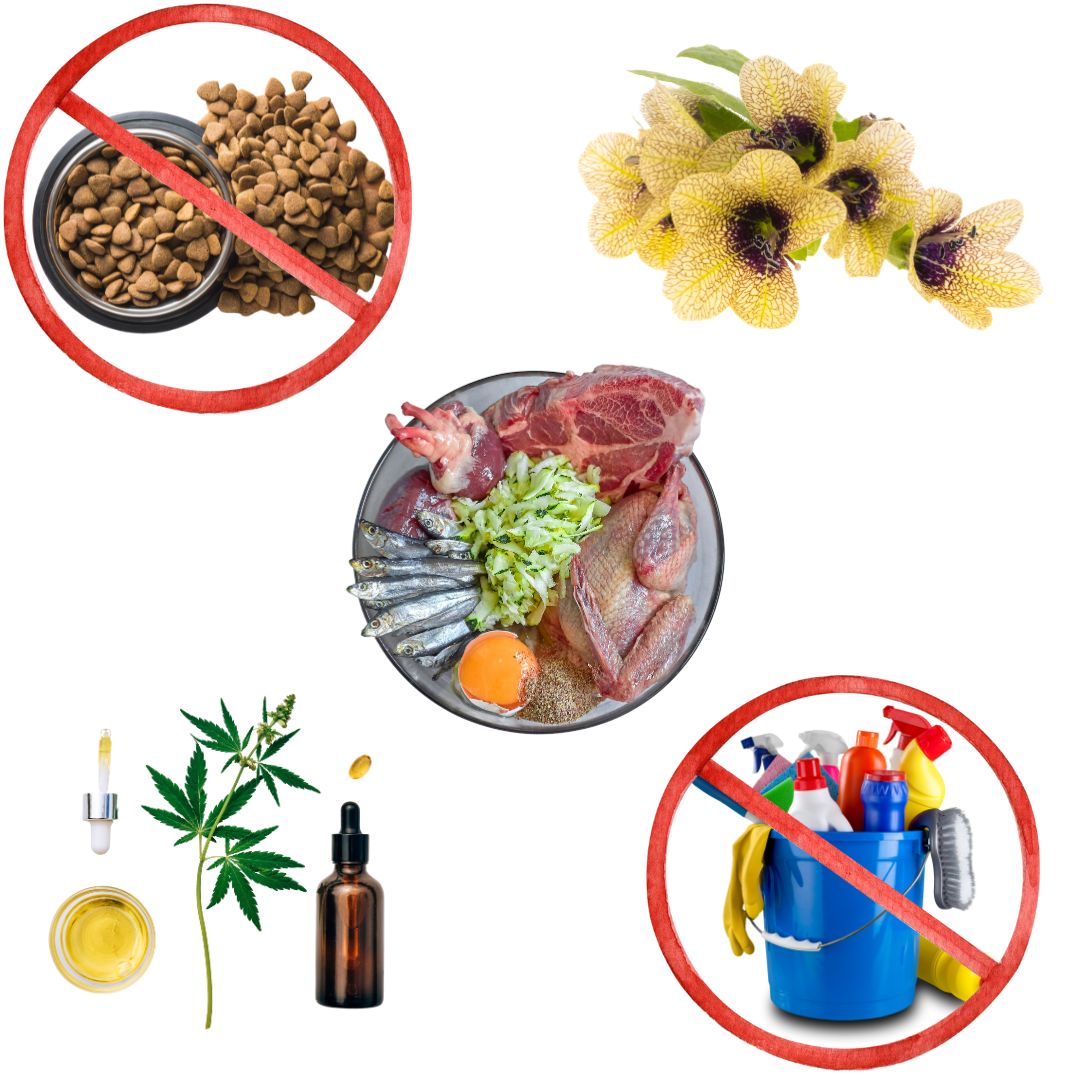RAW CHICKEN IS HIGHLY UNLIKELY TO CAUSE PARALYSIS IN DOGS…
Recently, Melbourne University produced a study investigating Acute PolyradiculoNeuritis (APN) in dogs. This is an immune-mediated peripheral nerve disorder where a suspected trigger is the bacterial pathogen Campylobacter spp. In a piece entitled “Raw Chicken Linked to Paralysis in Dogs”, the university found that around half of their APN dogs (13 of 27, 48%) had Campylobacter spp. in their faeces. Further, they found that 98% of the APN cases (26 of 27) had been fed raw chicken (including such pieces as necks and wings). From this, the authors concluded,
…raw chicken in the diet is highly likely to increase the risk of developing APN in dogs in Australia
…We recommend owners choose regular dog food rather than chicken necks until we know more about this debilitating condition

OK, on first glance, certainly considering the author’s conclusions, this doesn’t look good for raw feeding. Raw chicken is certainly a source of Campylobacter and a lot of raw dog foods are based on raw chicken. What’s more, Campylobacter is well known to put you on your ass, or at least pooing a lot out of it. It is the most common bacterial cause of enteric disease worldwide, with two million American cases reported annually. Despite authors yet to document a single incident of Campylobacter poisoning in humans resulting from a raw fed dog (Finley et al. 2006), it’s an emotive one for the people.
Needless to say, this University of Melbournes study was eagerly seized upon by our vets (Pete The Vet, Longford Vets, U-Vet, to name but three) as well as media outlets worldwide (ABC news, News.com, Daily Mail etc) as yet more proof that fresh food as a whole is dangerous for your dog and you should only feed them highly processed, inert, packets of crud made in China.
Before you do though, how about a little context.
First, has anyone on here ever heard of APN?! Come on now, there are thousands of you out there feeding raw chicken, surely one of your dogs has been stricken down?!!!!
No?! OK, let’s look to the science for a little more context…
1. AROUND HALF OF DOGS NORMALLY HOUSE CAMPYLOBACTER IN THEIR GUTS!
Approximately half the canine population house Campylobacter in their guts. It’s a very normal thing for cats and dogs to have, irrespective if they are dry or raw fed. Yes, there are 37 species and subspecies in the Campylobacter genus, although most are nonpathogenic. Studies repeatedly show that between 24-58% of healthy, of raw AND dry-fed dogs house Campylobacter species (Olson and Sandstedt 1987, Wieland et al. 2005, Chaban et al. 2010). In fact, a study from the very area surrounding the veterinary university that produced the study (South Australia) noted a prevalence of 40% Campylobacter in healthy dogs (Baker et al. 1999), albeit a lot of the test population were strays.
But when the authors of this study found almost exactly the same figure of Campylobacter in their APN dogs (13 of 27, 48%) they concluded that their study was “the first to report the prevalence of Campylobacter spp. in healthy domestic dogs in Australia and in dogs suffering from APN”, somehow attributing the rare disease to something we know affects up to 58% of normal, healthy, dry and raw fed dogs, and at the same time ignoring the fact the other half of their APN dogs did not test positive for the bug! An extraordinary leap.
To reiterate that point, it won’t matter if you dry feed them as dry fed dogs too house Campylobacter in their guts, just in case you thought that was going to prevent the vicious onslaught of APN in your raw fed dogs, unless your vet knows of a magic dry food that actually prevents dogs from housing these particular microbes in their intestines, which I’m sure they’re working on.
2. THERE ARE SO MANY CAUSES OF APN IN DOGS IT’S RIDICULOUS…
Contrary to the findings in this study, previous authors found no such link with Campylobacter and APN in dogs (Holt et al. 2011). In fact, these authors investigated the link between 6 microbes (Ehrlichia canis, Borrelia burgdorferi, Toxoplasma gondii, Neospora caninum, Campylobacter and distemper) with APN and found that T. gondii was the only significant culprit.
Instead, APN has been linked to a great variety of maladies including vaccinations (Gehring and Eggars 2001) as well as common upper respiratory and gastro-intestinal infections (Cummings et al. 1992, Cuddon 2002). Other authors have found a strong seasonal effect, where APN was more likely to strike in Autumn and Winter (are you guys, for some reason, not feeding chicken in Spring?!), as well as a breed effect, with Jack Russell terriers and West Highland white terriers most affected (Laws et al. 2017).
Most damning for their argument, APN has been documented to occur in pups that were not even eating real food, where 4 out of 8 weaning labrador pups were struck down with the disease (Cummings et al. 1988).
3. POOR SAMPLE SIZE AND POORER SAMPLING METHODS…
This study is talking about 27 dogs with APN. For those of you outside the science realm, this is a pitifully small number of cases to be working with. When the study notes that 26/27 dogs (98%) with APN were fed raw chicken but only 13/47 control dogs (26%), my natural inclination would be a) you need far more dogs before you make any reasonable claims and b) how did you select your control dogs?
A control group is a random sample of the normal population. A group that you can look at and expect normal or average results. It’s what you compare your test group to, to see if there’s anything going on. It’s very important in scientific terms. In this study, they state that the test group (dogs with APN) were all client owned and 98% were fed raw chicken at some stage (while this is very high the Australian’s are the world leaders at feeding raw food, they’re all at it). On the other hand, the control dogs were part client-owned but also healthy “staff dogs”. We are not told how many of each were used but we do now know that the dogs were not randomly selected. I think it’s fair to assume, being a veterinary university hospital that is presumably cash-sponsored by the dry food industry (I have sent in an FOI request of their list of cash donors for 2017 though I am yet to find a veterinary university not in receipt of pet food and drug cash), that most staff are on the dry food bandwagon and are thus appropriately terrified of feeding their pets any real food whatsoever. Can’t see too many of these dogs being fed raw chicken anyway!!!
Furthermore, for some reason, the authors failed to balance the average weight of both groups very well. The APN group of dogs had an average body weight of 8.5kg while the control group averaged 14 kg! When you consider that smaller dogs are more likley to be fed chicken necks than medium or large dogs who are normally fed larger pieces to prevent them gulping it down, this is likely a causal factor biasing the fact that the APN dogs were “more likely to be fed chicken wings and necks”. Yes, because they were smaller. What makes this all the more strange is that the authors clearly state they are aware that smaller dogs are more likely to be fed chicken necks and wings. And all this excludes the fact that we know APN affects smaller dogs more (Laws et al. 2017).
While this study is a complicated, heady read, when you drill into it, it’s findings are based largely around this finding that 98% of dogs with APN ate raw chicken when only 26% of the control did the same. Without that finding the whole study makes no sense whatsoever.
They need that figure in there.
4. MIGHT THERE BE ANOTHER REASON DOGS WITH APN SHED CAMPYLOBACTER IN THEIR FAECES?!
No, I really don’t know, is there?! The authors of the study seemed so clear, but I’m struggling. They found that a not-unusual 48% of their APN dogs were shedding Campylobacter (while the other half did not), noted that these dogs were being fed more raw chicken wings and necks than the control group (possibly because they were smaller coupled with the fact that the control group was populated with vet university staff dogs), concluded that their neurological disorder was caused by the chicken (an impossible leap) and recommended everyone to steer clear of all raw dog food as a whole.
Much like a cold sore infection in sick humans that seems to wait and pop out at times of weakness, might this simply be a by-product of the sickness, where APN makes them so sick it somehow results in a tropical sprue in the affected dogs guts, where their normal population of Campylobacter are permitted to grow out of control? We see this with mange in dogs, for example. The demodectic mite is something almost all dogs (and many humans) have on them at all times. It takes a very disrupted, weakened or highly stressed system to allow it to run rampant (hence healthy dogs do not break out in mange, it is reserved for the sick, the old or highly stressed strays in kennels).
It reminds me of the “bit of fat from the steak” argument you hear some vets using to explain pancreatitis in dry-fed dogs. You fed him that “bit of fat from the steak”, he got dangerously, painfully ill and table scraps are blamed for your dog’s condition. Like the proverbial straw that broke the camels back, that bit of fat is most certainly not to blame for that horrific infliction. Dogs are experts at eating fat. They eat a need and tolerate a LOT more of it than we do (Downey et al. 1980, Reynolds et al. 1995).
What actually happened was that a lifetime of disgustingly high carbohydrates – twice the amount humans should be eating and of the wrong, rapidly digesting variety (wheat and corn), every single meal of their life – destroyed their pancreas. We know this to be true as at least half of healthy DRY-FED cats and dogs appear to suffer some form of panreatitis by mid age. In a study of 73 dogs presented for post-mortem examination, 64% of pancreata displayed evidence of chronic pancreatitis (Newman and Woosley 2004). The very same is seen cats. Examination of 115 feline pancreata from healthy and sick cats found pancreatitis in 67% of cases, including 45% of apparently healthy cats (Owens et al. 1975, Macy 1989, Steiner and Williams 1997, De Cock et al. 2007).
Here’s how it works. Dogs are comlpetely ill-prepared for the high-carb insult. First, even the pet food propaganda literature agrees that dogs do not require any carbohydrates in their whatsoever (AAFCO 2008, SACN 2010). All the carbs you dry feeders give them need a LOT of amylase to digest them which the little carnivore pancreas is unusually tasked to produce all by itself (unlike us omnivores where carb digestion begins in the mouth with the saliva. Dogs, as carnivores, completely lack this step, as they don’t eat carbs). Then, when all this sugar is absorbed the blood sugars soar. The pancreas has to now furiously work to produce enough insulin to balance it all, something it would rarely have to do in the wild. Every single meal. As the cells saturate with insulin the pancreas must work harder and harder until it is on its last legs. One more straw and the camel’s back breaks. You then feed your dog a lovely lump of fat from your steak and the organ shits the bed. You then take your poor dog who is writhing in agony to the vet to be told that you caused the issue. You and your bloody normal food!
Looking only at the tail-end of the hurricane gives you no impression of its trajectory, only it’s impact.
CONCLUSION: RAW CHICKEN IS NOT LINKED TO PARALYSIS IN DOGS IN ANY REASONABLE WAY
On their website, in the supporting article for the release of this study, the University of Melbourne wrote that APN is not only rare but that most dogs recover without treatment. Needless to say, they’d heal a lot better with it, my point being we are talking a lightning bolt here guys, one that is unlikely to kill them.
[I have since learned this to be only half-true. I have been speaking with a client whose dog suffered from APN for six months. It’s a devastating issue that requires incredible amounts of rehab and physiotherapy, resulting largely from the muscle-dystrophy that occurs early on in the disease. In fairness, I believe the authors meant treatement by a vet. Most of the work is done by the owner.]
With all this considered, the fact that so many veterinary groups are so eager to share such a study as proof that fresh ingredients as a whole are outright dangerous and should be ruled out entirely for pets is indicative of the depth of scientific prowess currently being employed by them in the matter.
The truth is, once you peek behind the curtain that is the great dry pet food show, you can’t help but see it for what it is, a big circus of smoke and mirrors. I think of the little Oz, furiously peddling his pathetic contraption, pressing buttons and yanking levers, struggling desperately to keep the myth alive in the eyes of you the consumer. And you can never unsee him. You know that everything they do and say from this point on is tainted with a hefty pinch of bullshit. The conclusions drawn by this study, in my opinion, appears to be another example of that.
The whole pet food industry is based on one whopping big secret – despite their loud claims of science-backed evidence, there is not a single study EVER conducted by a dry food company OR the vet universities supporting them, that has compared a group of dry fed dogs to a group of raw fed dogs and concluded that the dry fed dogs did better in any respect whatsoever. In fact, the very opposite appears to be the case. Lacking any evidence to support the use of their junk food products over fresh ingredients, all they have left to convince you to hand over €5 per kilo for what is Weetabix with cows toenail and crushed centrum tablet in it, is smoke and mirrors. And the best smoke is fear. Fear you will do it wrong. Fear they will get sick. Fear you will get sick. Fear your kids will get sick.
I have dealt with this point more than enough times but as cereal-based dry food sales stutter and fall worldwide, to be replaced by more natural, raw dog food products not yet owned by them, the multi-billion industry is not going to go down without a fight. The notion of fear and danger will keep coming up, more and more in the future. Only last month a study recently found pathogens in a raw dog food product and it was shared with great gusto by vets nationwide (why do they never share the good news studies regarding the use of fresh ingredients, ever wonder that?). My response, read by more than 15,000 people on Facebook, noted that while it’s true raw meat-based products can contain baddies, so does dry food, so why was this being ignored? In fact, while raw dog food is yet to kill a dog or harm a single human, dry food cannot say the same in either instance. Injury aside, dry foods’ body count from chemical and microbiological contamination is absolutely shocking.
And still, those who should be guiding us are continuing to push us away from what is statistically a safer option for them and us.
There isn’t a dry-versus-raw debate guys, any more than there is a global warming debate. There is only skewed, industry nonsense and everyone else. Fear is their weapon. Truth is their enemy. The really scary bit is that what is true and what is industry-nonsense will become harder and harder to detect.
Never stop asking questions of the products you are sold and the people selling them to you guys and always feed dogs fresh food.
USEFUL ARTICLES
Another fine example of industry-funded BULLSHIT by a top scientist in a vet university – The Big Tick Project
REFERENCES USED
- Association of American Feed Control Officials (AAFCO) (2008). The dog food nutrient profiles. www.aafco.org
- Baker J, Barton MD, Lanser J. Campylobacter species in cats and dogs in South Australia. Aust Vet J 1999;77:10.
- Chaban, B., Ngeleka M, Hill JE. Detection and quantification of 14 Campylobacter species in pet dogs reveals an increase in species richness in feces of diarrheic animals. BMC Microbiology 2010;10:73–79
- Cuddon P. Acquired canine peripheral neuropathies. Vet Clin N Am 2002;32:207–249.
- Cummings J. Canine Inflammatory Neuropathies. In: Kirk RW, Boagura JD, eds. Current Veterinary Therapy XI. Philadelphia, PA: WB Saunders; 1992:1034–1037.
- Cummings, J.F., A. de Lahunta, M. M. Suter, R. H. Jacobson (1988). Canine protozoan polyradiculoneuritis. Acta Neuropathologica, 76(1):46–54
- Downey, R. L., Kronfeld, D. S. & Banta, C. A. (1980) Diet of beagles affects stamina. J. Am. Anim. Hosp. Assoc. 16: 273–277.
- Gehring, R. and Eggars, B. (2001). Suspected post-vaccinal acute polyradiculoneuritis in a puppy: short communication Journal of the South African Veterinary Association, 72(2)
- Hand, M.S., Thatcher, C.D., Remillard, R.L., Roudebush, P. and Novotny, B.J. (2010). Small Animal Clinical Nutrition, 5th Edition. Published by The Mark Morris Institute, Kansas, U.S.
- Holt, N. Murray M, Cuddon PA, Lappin MR (2011). Seroprevalence of various infectious agents in dogs with suspected acute canine polyradiculoneuritis. Journal of Veterinary Internal Medicine,(2):261-6
- Laws, E.J., T. R. Harcourt-Brown, N. Granger, J. H. Rose (2017). An exploratory study into factors influencing the development of acute canine polyradiculoneuritis in the UK. Journal of Small Animal Practice, 58(8): 437–443
- Olson P, Sandstedt K. Campylobacter in the dog: A clinical and experimental study. Vet Rec 1987;121:99–101.
- Reynolds, A.J., Taylor, C.R., Hoppler, H., Weibel, E., Weyand, P., Roberts, R., Reinhart, G.A. (1995). The effect of diet on sled dog performance, oxidative capacity, skeletal muscle microstructure, and muscle glycogen metabolism. In: Carey, D.P., Norton, S.A., Bolser, S.M., eds. Recent Advances in Canine and Feline Nutritional Research: Proceedings of the 1996 Iams International Nutrition Symposium. Wilmington OH: Orange Frazer Press,1996; 181-198.
- Wieland, B., G. Regula, J. Danuser, M. Wittwer, A. P. Burnens, T. M. Wassenaar, K. D. C. Stärk (2005). Campylobacter spp. in Dogs and Cats in Switzerland: Risk Factor Analysis and Molecular Characterization with AFLP. Zoonoses and public health, 52(4):183–189

